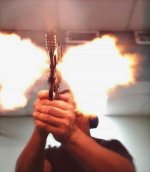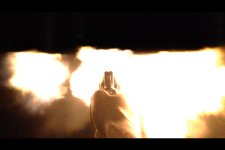Hello Everyone,
As a new shooter [3 years +/-], I have noticed the proliferation of firearm programs on the Outdoor Channel & the Sportsman Channel. The above [a new program to me] was on yesterday with the subject of handgun recoil management.
Three gents on the screen, Rich, Scott and Jim discussed the subject as regards to defensive carry. Each admitted that they shoot .38 spcl and/or +P; none favor .357 at all, because of recoil issue; best to have three hits w/.38 than one w/.357, or so they said.
I take my R8 to the range and have very little problem managing recoil with 158 gr .357 JHP. Believe me, it's the firearm---not my expertise! I'm a resident of Ca., so I do not carry.
Obviously, I'm not under any duress or in a adrenaline-pumping/defensive position at the range, but they weren't either; just three guys in a discussion at the range.
So, may I ask you folks who have a tremendous experience advantage over me?
First question: do you favor their conclusion; that is, preferring .38 over .357?
Second question, how do you manage recoil with your favorite firearm, revolver or semi-auto?
Many thanks for taking the time to respond!
Lon C.
As a new shooter [3 years +/-], I have noticed the proliferation of firearm programs on the Outdoor Channel & the Sportsman Channel. The above [a new program to me] was on yesterday with the subject of handgun recoil management.
Three gents on the screen, Rich, Scott and Jim discussed the subject as regards to defensive carry. Each admitted that they shoot .38 spcl and/or +P; none favor .357 at all, because of recoil issue; best to have three hits w/.38 than one w/.357, or so they said.
I take my R8 to the range and have very little problem managing recoil with 158 gr .357 JHP. Believe me, it's the firearm---not my expertise! I'm a resident of Ca., so I do not carry.
Obviously, I'm not under any duress or in a adrenaline-pumping/defensive position at the range, but they weren't either; just three guys in a discussion at the range.
So, may I ask you folks who have a tremendous experience advantage over me?
First question: do you favor their conclusion; that is, preferring .38 over .357?
Second question, how do you manage recoil with your favorite firearm, revolver or semi-auto?
Many thanks for taking the time to respond!
Lon C.


